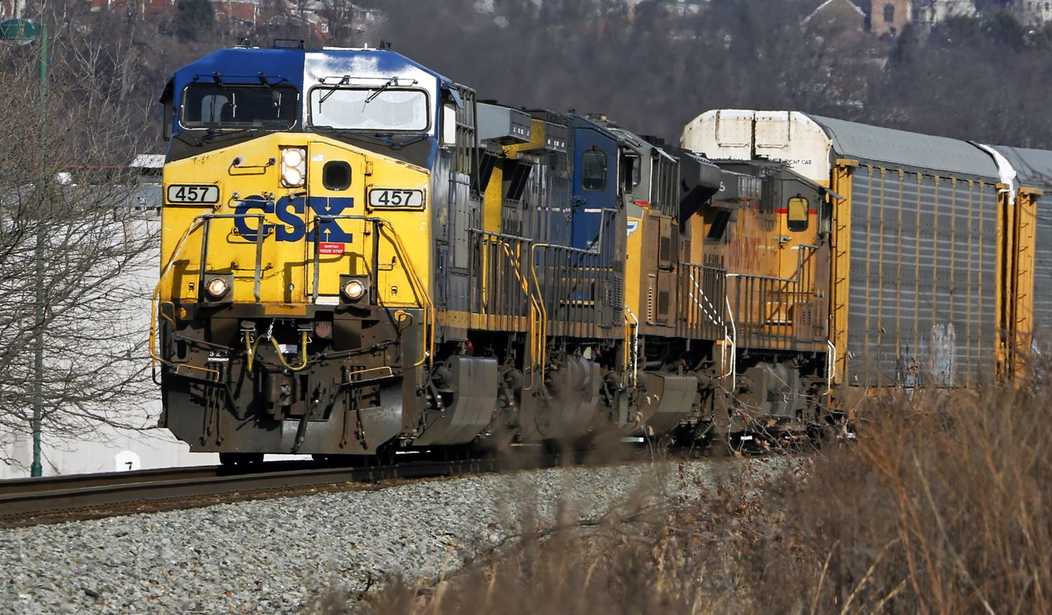In the spring of 2023, the so-called “Rail Safety Act” was introduced in Congress with the alleged purpose of improving freight rail safety.
Despite its high-minded stated purpose, in reality it’s a Big Labor gift bag whose substance is costly, counterproductive and impractical.
The bill proposes a litany of new regulations, notably including mandatory new increased crew size requirements. Never mind that for years rail industry safety statistics have improved during a period of decreasing crew sizes due to safety measures that the industry has been implementing on its own.
In fact, multiple studies from both private consulting firms and the Federal Railroad Administration (FRA) itself found no correlation between a larger crew and safety. American railroads are already among the safest forms of transportation and are actually getting safer. In March 2023, the Association of American Railroads (AAR) released data proving exactly that point.
Specifically, thanks to U.S. railroad’s commitment to safety and industry investments, train accident rates have dropped 28 percent since 2000, marking the last decade as its safest ever. The accident rate for Class I railroads, including CSX, Union Pacific, and BNSF, is down 49 percent since 2000, including a 63 percent drop in casualty rate per Class I railroad employee.
Despite that continuing progress, activists outside the rail industry - including Big Labor leaders, some policymakers and special interest groups - nevertheless attempt to paint the rail landscape as dangerous and requiring “fixes” for things that aren’t broken. Some activist commentary also seeks to exploit the noble notion of rail safety to push unrelated agenda items.
Recommended
Last year, for instance, Transportation Communications Union/IAM (TCU) President Don Grissom attempted to scapegoat freight rail following a tragic accident in Ohio. He claimed that freight rail failed to invest in an “automatic safety warning system” that cautions workers of oncoming trains.
The problem? That technology does not actually exist.
What does exist is a comprehensive array of operating rules to prevent incidents from occurring and to keep employees and communities safe.
Following TCU President Grissom’s false accusations, the National Transportation Safety Board (NTSB) went so far as to issue a prompt rebuke and warn Grissom “that any further violation of the regulatory restrictions…may result in revocation of its party status for this NTSB investigation.” Through that admonition, the NTSB drew a regulatory line in the sand and recognized the severity and inaccuracy of the union’s claims.
The union’s unfounded accusations regarding the state of rail safety technology are further contradicted by the massive amount of investment from freight rail companies regarding safety, infrastructure, and surrounding host communities. The freight rail industry invests significant dollars into their networks to improve safety, modernize their infrastructure and even to improve the environmental performance of their operations.
For example, according to its trade group, the freight rail industry collectively averages a staggering $23 billion a year in private investment into their networks. As just one illustration, in March of 2023, Jacksonville, Florida, based CSX announced that it had already updated and was proactively installing an additional 53 hot bearing detectors across their network to better enable the railroad to detect overheated rail car wheel bearings before accidents occur. Once CSX finishes that installation effort, it indicated those detectors, along with the ones they previously installed, will be in place every 14 to 15 miles along their routes.
Utilizing actual available technology, establishing partnerships with first responders, and investing financially in infrastructure upgrades all help ensure the long-term safety of America’s railways.
In contrast, falsely claiming that railroads need to use technology that doesn’t exist, or advocating legislation whose provisions only add red tape to an already-regulated industry, with a goal of locking in union membership numbers, is not the path to safety improvement. Whatever the “Railway Safety Act’s” stated sentiments, piling on counterproductive regulatory measures and attempting to scapegoat freight rail for not doing enough won’t make our railways safer.
The better alternative is for Big Labor leaders and activist political leaders to change course and support efforts that will actually help to advance the goal of rail safety. That includes continuing to invest in rail infrastructure to keep surrounding host communities safe, extending the significant progress the rail industry has made.
If and when “automatic warning system” technology is introduced, the rail industry’s previous record of investments demonstrate that freight rail companies will be the first in line to voluntarily fold it into their safety strategy. In the meantime, enlarging government bureaucracies and falsely maligning the rail industry will only make matters worse, not better.
Timothy H. Lee, Senior Vice President of legal and public affairs at the Center for Individual Freedom (CFIF)

























Join the conversation as a VIP Member